Ribosomal Protein L7 Polyclonal Antibody
- Catalog No.:YT4118
- Applications:WB;IHC;IF;ELISA
- Reactivity:Human;Mouse;Rat;Cat
- Target:
- Ribosomal Protein L7
- Fields:
- >>Ribosome;>>Coronavirus disease - COVID-19
- Gene Name:
- RPL7
- Protein Name:
- 60S ribosomal protein L7
- Human Gene Id:
- 6129
- Human Swiss Prot No:
- P18124
- Mouse Gene Id:
- 19989
- Mouse Swiss Prot No:
- P14148
- Rat Swiss Prot No:
- P05426
- Immunogen:
- The antiserum was produced against synthesized peptide derived from human RPL7. AA range:199-248
- Specificity:
- Ribosomal Protein L7 Polyclonal Antibody detects endogenous levels of Ribosomal Protein L7 protein.
- Formulation:
- Liquid in PBS containing 50% glycerol, 0.5% BSA and 0.02% sodium azide.
- Source:
- Polyclonal, Rabbit,IgG
- Dilution:
- WB 1:500 - 1:2000. IHC 1:100 - 1:300. ELISA: 1:10000.. IF 1:50-200
- Purification:
- The antibody was affinity-purified from rabbit antiserum by affinity-chromatography using epitope-specific immunogen.
- Concentration:
- 1 mg/ml
- Storage Stability:
- -15°C to -25°C/1 year(Do not lower than -25°C)
- Other Name:
- RPL7;60S ribosomal protein L7
- Observed Band(KD):
- 32kD
- Background:
- Ribosomes, the organelles that catalyze protein synthesis, consist of a small 40S subunit and a large 60S subunit. Together these subunits are composed of 4 RNA species and approximately 80 structurally distinct proteins. This gene encodes a ribosomal protein that is a component of the 60S subunit. The protein belongs to the L30P family of ribosomal proteins. It contains an N-terminal basic region-leucine zipper (BZIP)-like domain and the RNP consensus submotif RNP2. In vitro the BZIP-like domain mediates homodimerization and stable binding to DNA and RNA, with a preference for 28S rRNA and mRNA. The protein can inhibit cell-free translation of mRNAs, suggesting that it plays a regulatory role in the translation apparatus. It is located in the cytoplasm. The protein has been shown to be an autoantigen in patients with systemic autoimmune diseases, such as systemic lupus erythematosus. As is typical
- Function:
- function:Binds to G-rich structures in 28S rRNA and in mRNAs. Plays a regulatory role in the translation apparatus; inhibits cell-free translation of mRNAs.,similarity:Belongs to the ribosomal protein L30P family.,subunit:Homodimer.,
- Subcellular Location:
- nucleus,nucleolus,cytoplasm,cytosol,ribosome,focal adhesion,membrane,cytosolic large ribosomal subunit,intracellular ribonucleoprotein complex,extracellular exosome,
- Expression:
- Bone marrow,Eye,Fibroblast,Hepatoma,Lung,Mammary gland,Muscle,Pancreas,Skin,
Profiling of Host Cell Response to Successive Canine Parvovirus Infection Based on Kinetic Proteomic Change Identification. Scientific Reports 2016 Jul 13 WB Cat F81 cell
- June 19-2018
- WESTERN IMMUNOBLOTTING PROTOCOL
- June 19-2018
- IMMUNOHISTOCHEMISTRY-PARAFFIN PROTOCOL
- June 19-2018
- IMMUNOFLUORESCENCE PROTOCOL
- September 08-2020
- FLOW-CYTOMEYRT-PROTOCOL
- May 20-2022
- Cell-Based ELISA│解您多样本WB检测之困扰
- July 13-2018
- CELL-BASED-ELISA-PROTOCOL-FOR-ACETYL-PROTEIN
- July 13-2018
- CELL-BASED-ELISA-PROTOCOL-FOR-PHOSPHO-PROTEIN
- July 13-2018
- Antibody-FAQs
- Products Images
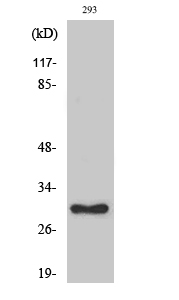
- Western Blot analysis of various cells using Ribosomal Protein L7 Polyclonal Antibody diluted at 1:2000
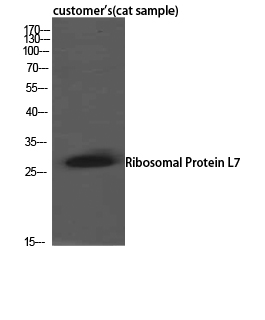
- Western Blot analysis of customer's(cat sample) using Ribosomal Protein L7 Polyclonal Antibody. Antibody was diluted at 1:2000
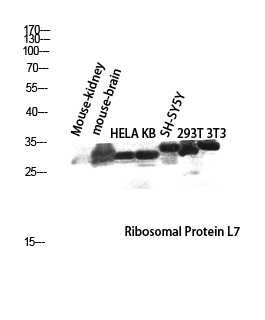
- Western blot analysis of Mouse-kidney mouse-brain HELA KB SH-SY5Y 293T 3T3 lysis using Ribosomal Protein L7 antibody. Antibody was diluted at 1:2000
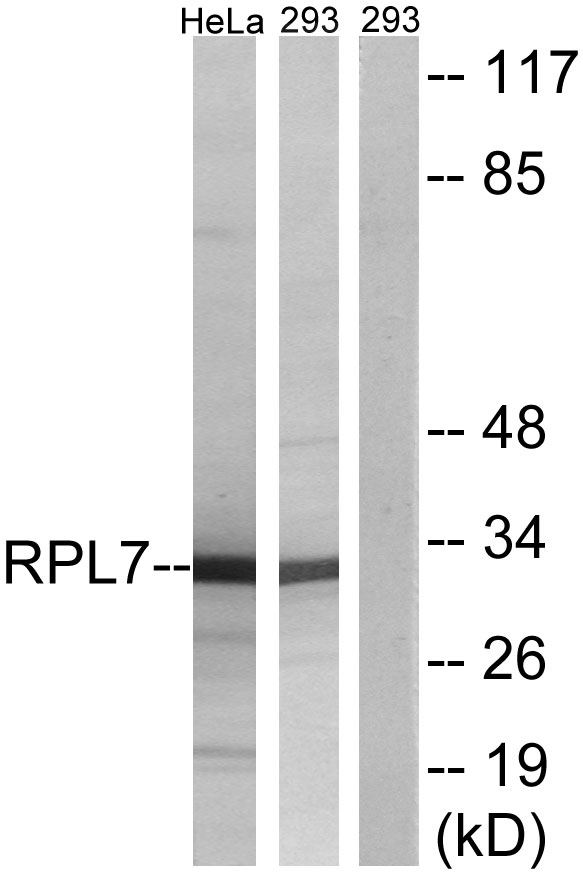
- Western blot analysis of lysates from 293 and HeLa cells, using RPL7 Antibody. The lane on the right is blocked with the synthesized peptide.
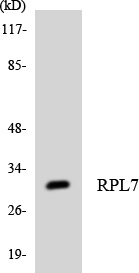
- Western blot analysis of the lysates from K562 cells using RPL7 antibody.
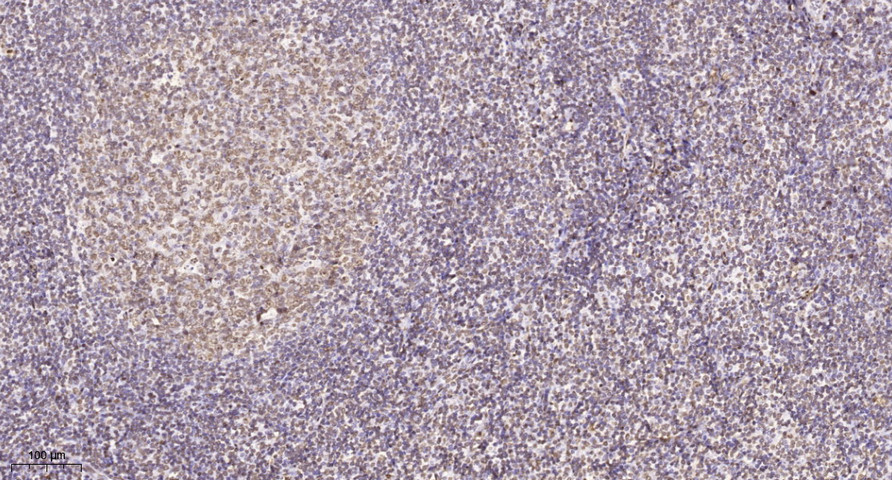
- Immunohistochemical analysis of paraffin-embedded human tonsil. 1, Tris-EDTA,pH9.0 was used for antigen retrieval. 2 Antibody was diluted at 1:200(4° overnight.3,Secondary antibody was diluted at 1:200(room temperature, 45min).



